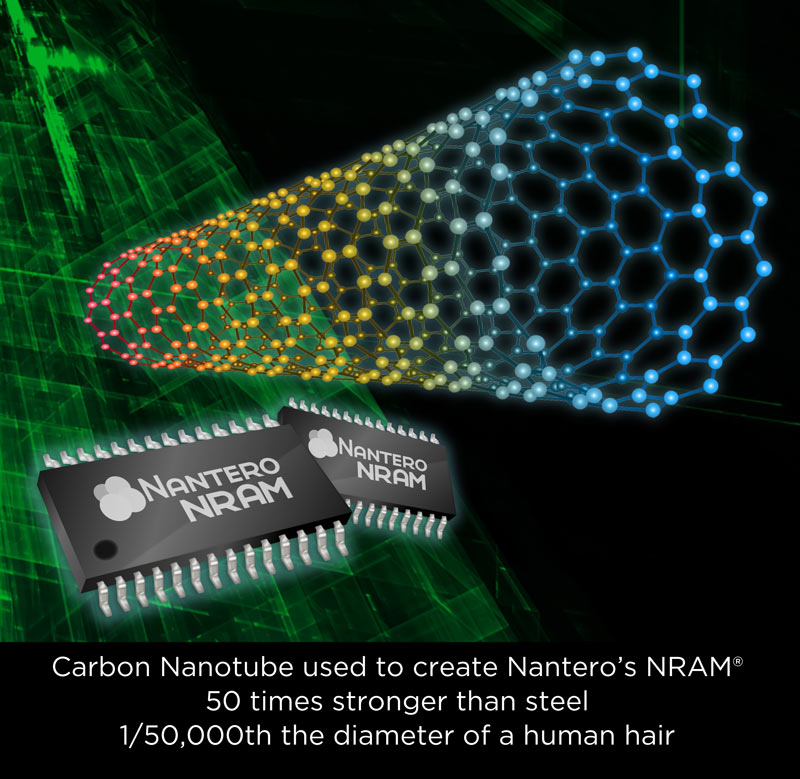 INFRA
INFRA
 INFRA
INFRA
 INFRA
INFRA
While Intel Corp. works to commercialize its bleeding-edge XPoint memory technology, an up-and-coming contender called Nantero Inc. is rapidly gaining ground.
The nanotechnology startup marked another milestone in its efforts today after securing a $21 million funding round led by Globespan Capital Partners. The venture firm, which previously backed tech giants such as Zynga Inc. and Glassdoor Inc., was joined by an unspecified number of other investors including participants from Nantero’s previous five rounds. Its total funding now stands at $110 million.
Nantero will use the capital to speed up the development of its flagship NRAM technology, a novel type of computer memory that is based on carbon nanotubes rather than silicon like traditional semiconductors. When placed under a microscope, the material appears as a forest of tiny cylinders that are up to 50,000 times thinner than the diameter of a human hair. The strong bond between the carbon atoms that make up each nanotubes gives them unique physical properties seen as practically unmatched in the natural world.
Among others, Nantero boasts that NRAM can operate in temperatures of up to 572 degrees Fahrenheit and survive a trip to outer space. But most importantly of all, carbon nanotubes have nearly unmatched electrical conductivity properties that lend themselves incredibly well to storing information. The startup claims that memory chips based on its technology are capable of writing and reading data up to 100 times faster than flash as a result.
This puts NRAM more or less on par with the high-speed DRAM that computers use to store data during processing, except that it can retain information even when power is cut, which removes the need for a separate permanent storage medium such as flash. As a result, the technology could pave the way for the creation of ultra-fast machines that avoid the delay of moving information back and forth between different parts of the motherboard.
The icing on the cake is that the transistors in NRAM can potentially be shrunk down to five nanometers, which is half as small as the densest DRAM products on the market. The more circuits fit on a single chip, the more data it’s able to hold. Nantero hopes that this space efficiency and the other unique properties of carbon nanotubes will give its technology an edge over Intel’s XPoint chips.
The startup’s technology is already being tried by half a dozen manufacturers in the data center equipment, consumer electronics and semiconductor industries. Among them is Fujitsu Ltd., which recently became the first supplier to start mass-producing NRAM. The rest of the industry, meanwhile, is already laying the groundwork for the era when carbon nanotubes and other persistent memory technologies will define computing.
THANK YOU